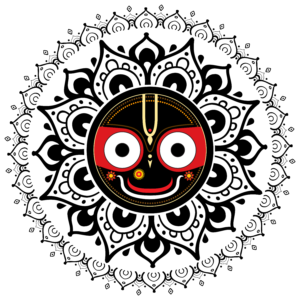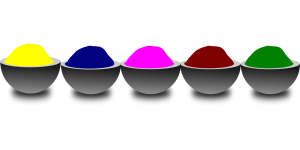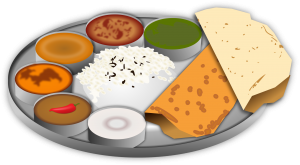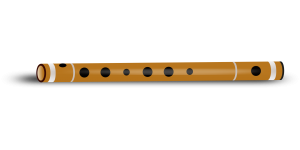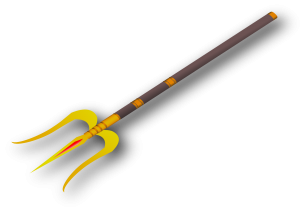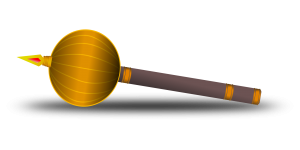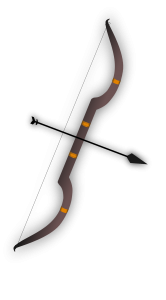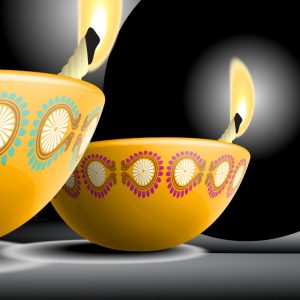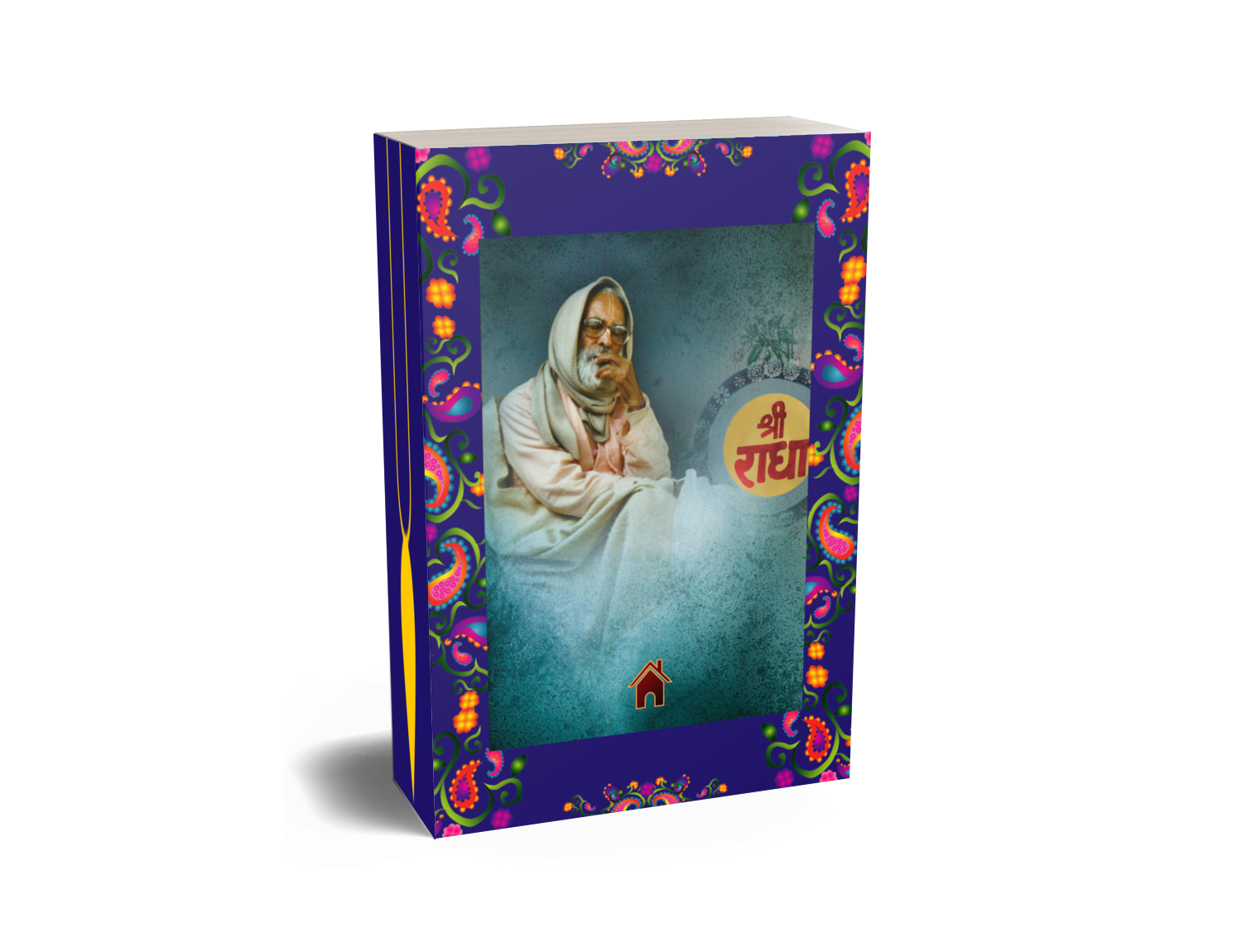

The following is a transcription of a discourse delivered by Śrīla Bhaktivedānta Nārāyaṇa Mahārāja at the Śrī Devānanda Gauḍīya Maṭha, in Navadvīpa, India, on March 13, 2000
The subject matter of Śrī Rāya Rāmānanda saṁvāda is the backbone, the most vital part of Śrī Caitanya-caritāmṛta. This is where Śrī Caitanya Mahāprabhu revealed his rasarāja-mahābhāva-svarūpa, His form as Rādhā-Kṛṣṇa combined, to Śrī Rāmānanda Rāya. Rāmānanda Rāya stated there that one can only achieve gopī-prema under the guidance of the gopīs:
gopī-ānugatya vinā aiśvarya-jñāne
bhajileha nāhi pāya vrajendra-nandane
(Caitanya-caritāmṛta, Madhya-līlā 8.230).
“Unless one follows in the footsteps of the gopīs, he cannot attain the service of the lotus feet of Kṛṣṇa, the son of Nanda Mahārāja. If one is overcome by knowledge of the Lord’s opulence, he cannot attain the Lord’s lotus feet, even though he is engaged in devotional service.”
And, in order to be under the gopīs, one must be under the guidance of Śrīla Rūpa Gosvāmī. There is a verse by 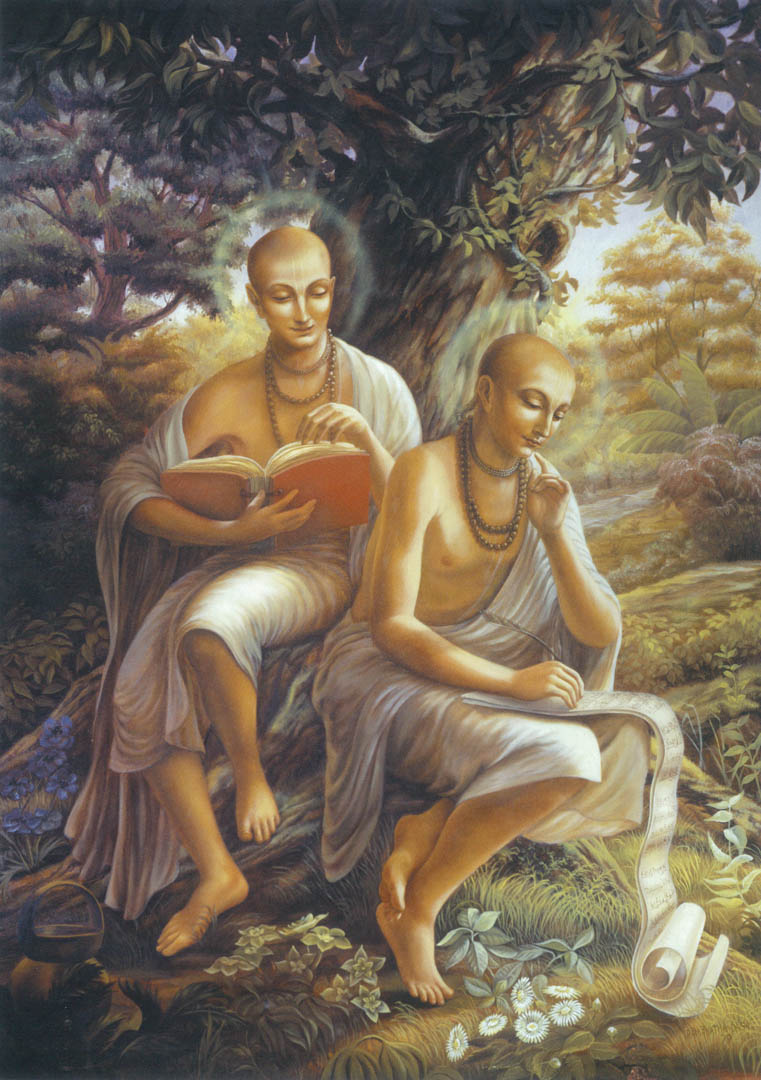 Kavi-karṇapūra in glorification of Śrīla Rūpa Gosvāmī:
Kavi-karṇapūra in glorification of Śrīla Rūpa Gosvāmī:
priya-svarūpe dayita-svarūpe
prema-svarūpe sahajābhirūpe
nijānurūpe prabhur eka-rūpe
tatāna rūpe sva-vilāsa-rūpe
(Śrī Caitanya-caritāmṛta, Madhya-līlā 19.121)
“Indeed, Śrīla Rūpa Gosvāmī, whose dear friend was Svarūpa Dāmodara, was the exact replica of Śrī Caitanya Mahāprabhu, and he was very, very dear to the Lord. Being the embodiment of Śrī Caitanya Mahāprabhu’s ecstatic love, Śrīla Rūpa Gosvāmī was naturally very beautiful. He very carefully followed the principles enunciated by the Lord, and he was a competent person to explain properly the pastimes of Lord Kṛṣṇa. Śrī Caitanya Mahāprabhu expanded His mercy to Śrīla Rūpa Gosvāmī just so he could render service by writing transcendental literatures.”
Kṛṣṇa came to this world to taste three things. These are the three internal reasons for His appearance as Caitanya Mahāprabhu, and He tasted them in the Gambhīrā of Jagannātha Purī.
śrī-rādhāyāḥ praṇaya-mahimā kīdṛśo vānayaivā-
svādyo yenādbhuta-madhurimā kīdṛśo vā madīyaḥ
saukhyaṁ cāsyā mad-anubhavataḥ kīdṛśaṁ veti lobhāt
tad-bhāvāḍhyaḥ samajani śacī-garbha-sindhau harīnduḥ
(Śrī Caitanya-caritāmṛta, Ādi-līlā 4.230)
[“Desiring to understand the glory of Rādhārāṇī’s love, the wonderful qualities in Him that She alone relishes through Her love, and the happiness She feels when She realizes the sweetness of His love, the Supreme Lord Hari, richly endowed with Her emotions, appeared from the womb of Śrīmatī Śacī-devī, as the moon appeared from the ocean.”]
“To understand and taste the glories of Rādhārāṇī’s love, to understand and taste the sweetness of His līlā, veṇu, rūpa and prema as only She can relish, and to taste the happiness She experiences in Her relishment of these 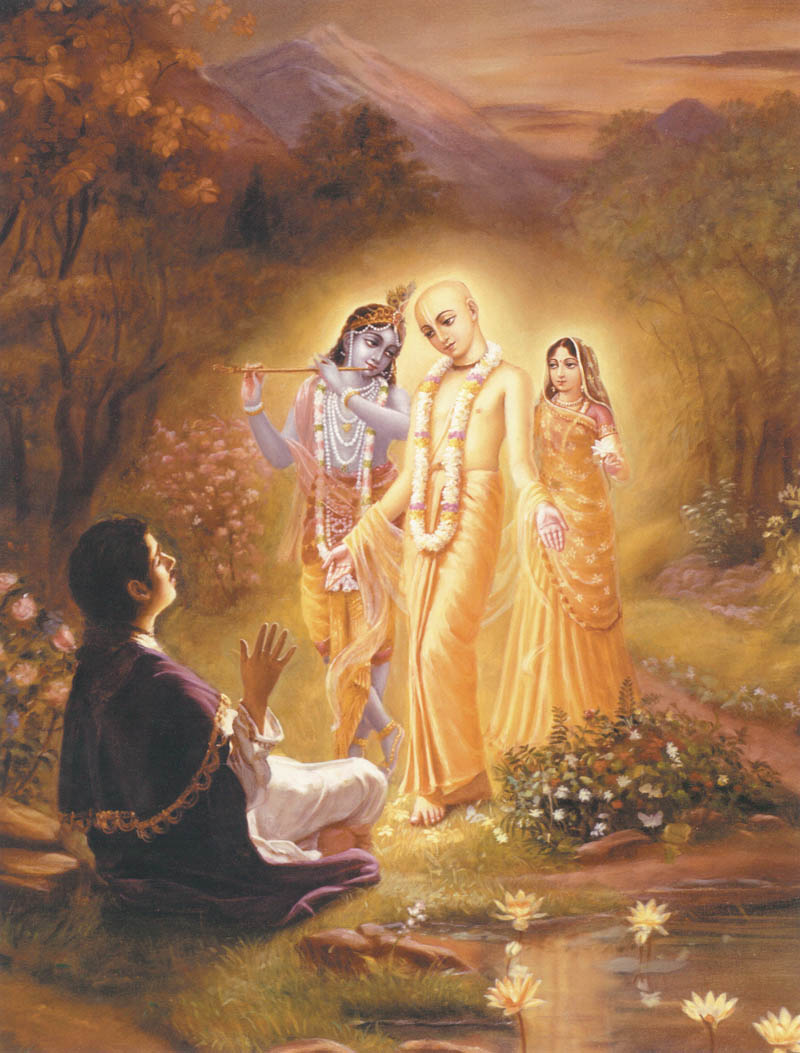 four sweetnesses, Kṛṣṇa took birth from the womb of Śacīmātā as Śrī Śacīnandana Gaura-hari.”
four sweetnesses, Kṛṣṇa took birth from the womb of Śacīmātā as Śrī Śacīnandana Gaura-hari.”
Śrī Caitanya Mahāprabhu appeared in Navadvīpa and performed His pastimes there. It is said that after these pastimes were completed, He took sannyāsa and went to Purī. Later He went to South India and met Śrīla Rāmānanda Rāya, and revealed to him His form as Śrī Śrī Rādhā and Kṛṣṇa combined. This rasarāja-mahābhāva, rasarāja and mahābhāva, are also described in the Śrīmad-Bhāgavatam – as the pastimes of Rādhā and Kṛṣṇa. Kṛṣṇa is rasarāja (the king of all tasters of transcendental mellows) and Rādhikā is mahābhāva-svarūpa (the quintessence of loving emotions towards Kṛṣṇa).
In Navadvīpa Śrī Gaurāṅga performed sakhya-bhāva pastimes with his friends in his naravata, human-like līlā. It is said that after taking sannyāsa in Navadvīpa, He left and performed higher pastimes in Purī. After that, on the bank of Godāvarī, He met Rāmānanda Rāya and learned how to taste Kṛṣṇa in a still more intense mood of separation. It is not actually true, however, that Purī and Godāvarī are higher than Navadvīpa, nor is it true that Śrī Śacīnandana Gaura-hari ever leaves Navadvīpa.
It is said that Mahāprabhu was able to taste what He came to this world to taste – only after He met Rāmānanda Rāya, who is Viśākhā in kṛṣṇa-līlā. He learned from him how to taste rādhā-bhāva. Do you know why He learned from Rāmānanda Rāya instead of Śrīla Svarūpa Dāmodara, who is Lalitā-devī in kṛṣṇa-līlā? Lalitā-devī is the first expansion of Rādhārāṇī, and Viśākhā-devī is the second expansion. But Viśākhā’s birthday is the same as that of Śrīmatī Rādhārāṇī, so her nature is the same. She has practically the same qualities and the same form. Kṛṣṇa could not be taught by Lalitā-devī because her mood is pragalbhā, impudent and bold. (There is no actual equivalent word in English for pragalbhā.) Śrīmatī Rādhikā and Śrīmatī Viśākhā, although also left-wing gopīs, are the same as each other – madhya-nāyikā (heroines who are a mixture of pragalbhā and mugdhā [enchanted]). Therefore Mahāprabhu had to learn from Rāmānanda Rāya how to taste rādhā-bhāva. And, because it was at Godāvarī where Mahāprabhu learned to taste that rādhā-bhāva, some may say that Godāvarī is higher than Navadvīpa.
But this is not so. Navadvīpa itself is the highest abode, and it includes Godāvarī and Purī. We can understand 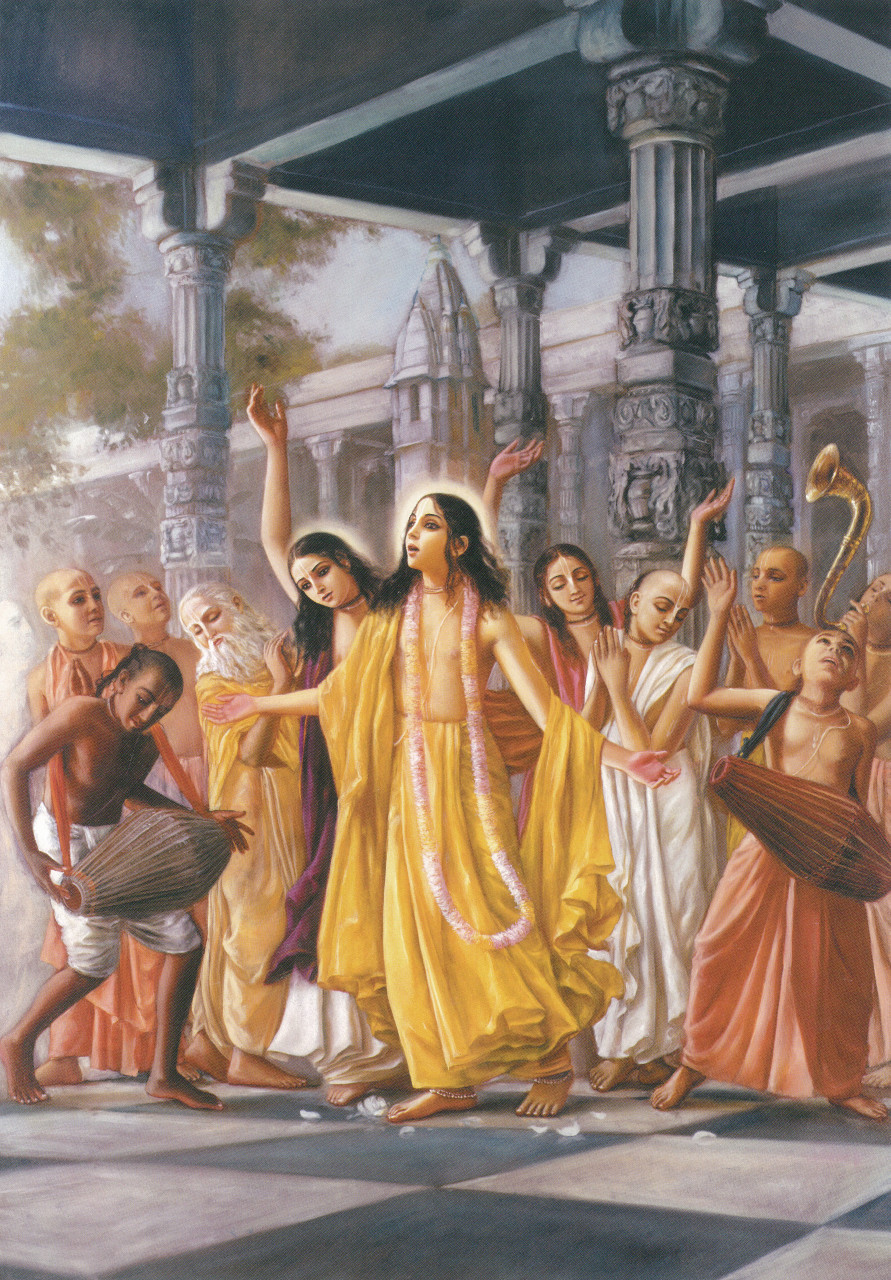 this by a comparative study of aiśvarya-mayī-līlā and mādhurya-mayī-līlā. (‘Mayī’ means ‘consisting of’). What is the difference between aiśvarya and mādhurya? Aiśvarya-līlā are displays of opulence that cannot be performed by any human being. Mādhurya-līlā are those pastimes that appear human-like, even if there is a great display of opulence. If there is no opulence, then the activities are simply mundane. So there may be opulence, but the līlā still appears sweet and human-like, so it is called mādhurya. Whether opulence is clearly present or not, in mādhurya-līlā there does not seem to be opulence.
this by a comparative study of aiśvarya-mayī-līlā and mādhurya-mayī-līlā. (‘Mayī’ means ‘consisting of’). What is the difference between aiśvarya and mādhurya? Aiśvarya-līlā are displays of opulence that cannot be performed by any human being. Mādhurya-līlā are those pastimes that appear human-like, even if there is a great display of opulence. If there is no opulence, then the activities are simply mundane. So there may be opulence, but the līlā still appears sweet and human-like, so it is called mādhurya. Whether opulence is clearly present or not, in mādhurya-līlā there does not seem to be opulence.
As we see from Kṛṣṇa’s līlā, there is more aiśvarya in Vṛndāvana than there is in Vaikuṇṭha, Dvārakā, or Mathurā. However, it is covered by so much sweetness that the opulence cannot be tasted. [For clarification an example is given of salt and sugar: There are four cups. The first has 1 ounce of salt and no sugar. The second has 2 ounces of salt and 1½ ounces of sugar. The third has 3 ounces of salt and 3 ounces of sugar. And the fourth has 4 ounces of salt and 100 ounces of sugar. Although the fourth cup has more salt, one cannot taste it because of all the sugar.] In Goloka Vṛndāvana the opulence is covered.
Kṛṣṇa’s mādhurya-līlā includes aiśvarya. When Kṛṣṇa lifted Govardhana Hill the cowherd boys thought that He 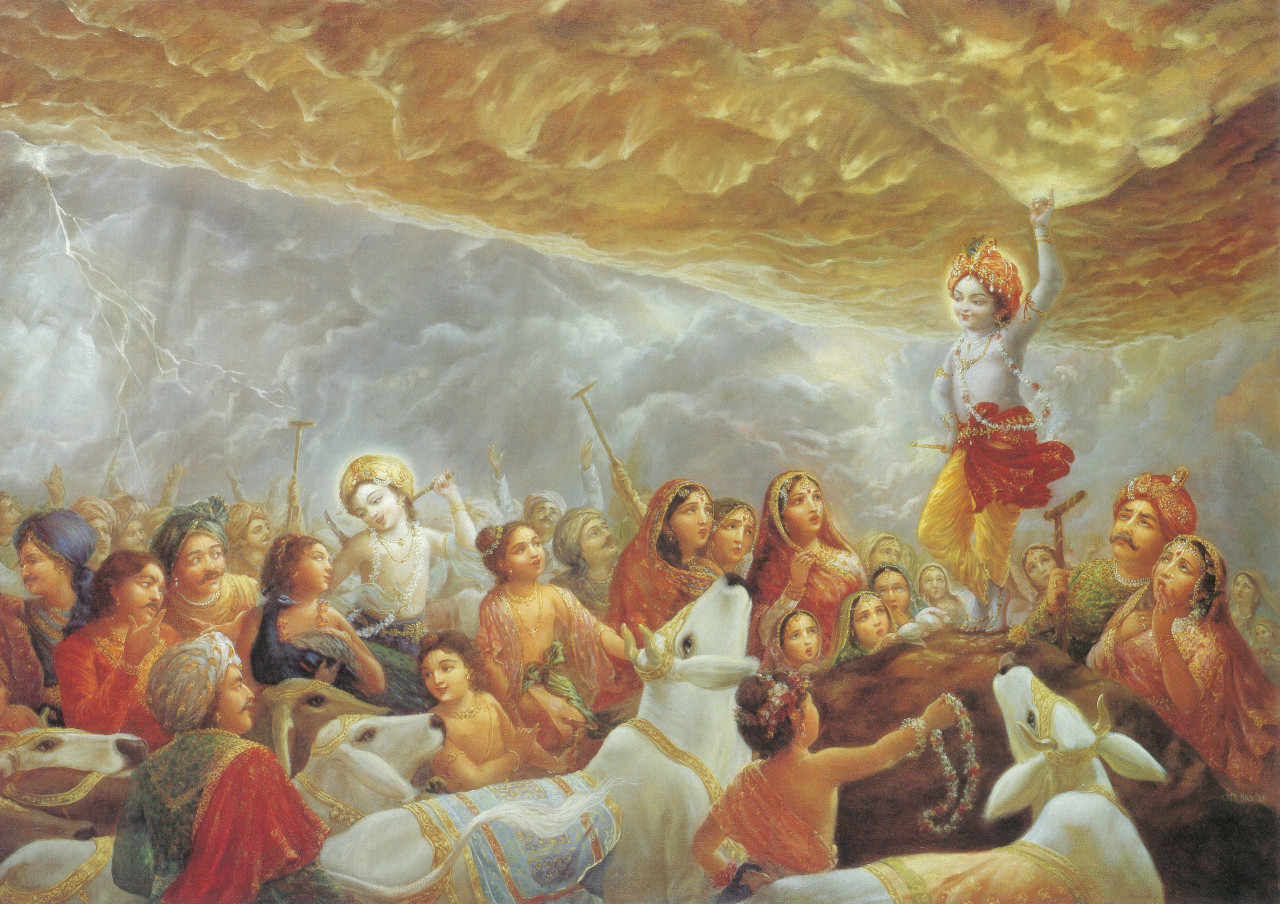 must be tired. They considered, ‘We should also help to hold up Govardhana with our sticks.’ Others thought, ‘Because of Nanda Mahārāja’s austerities, Lord Nārāyaṇa had entered Kṛṣṇa’s body. It is actually Lord Nārāyaṇa who is holding Govardhana.’ The gopīs were glaring with crooked eyes upon Govardhana. They said to him, ‘If you fall on Kṛṣṇa, we will curse you.’ So these are human-like pastimes. When Kṛṣṇa was a baby He showed His mother His universal form. Everything was there within His mouth – all incarnations, all universes, all elements, all senses, and so forth. Despite this, Yaśodāmayī could not conceive that her son was God.
must be tired. They considered, ‘We should also help to hold up Govardhana with our sticks.’ Others thought, ‘Because of Nanda Mahārāja’s austerities, Lord Nārāyaṇa had entered Kṛṣṇa’s body. It is actually Lord Nārāyaṇa who is holding Govardhana.’ The gopīs were glaring with crooked eyes upon Govardhana. They said to him, ‘If you fall on Kṛṣṇa, we will curse you.’ So these are human-like pastimes. When Kṛṣṇa was a baby He showed His mother His universal form. Everything was there within His mouth – all incarnations, all universes, all elements, all senses, and so forth. Despite this, Yaśodāmayī could not conceive that her son was God.
Śrī Caitanya Mahāprabhu is Kṛṣṇa Himself, and His dhāma, Śrī Navadvīpa, is Vṛndāvana itself. In Navadvīpa He is known as Śacī-putra and Śacīnandana, the son of Śacīmātā and Jagannātha Miśra. He was also called Viṣṇupriyā-pati, the husband of Śrīmatī Viṣṇupriyā-devī. Practically no one knew He was the Supreme Lord. Two of His friends at that time were Jagadānanda Paṇḍita and Svarūpa Dāmodara. They were his fellow students when He attended the school of Gaṅgādāsa Paṇḍita, and they all performed their mādhurya-līlā there. As there are so many ‘human’ learned scholars or paṇḍitas, the residents of Navadvīpa considered Śacī-putra to be Nimāi Paṇḍita, a very good human paṇḍita. There is no aiśvarya in this name Nimāi Paṇḍita. It is naravata. When Keśava Kāśmīrī, the Digvijaya challenging scholar, came to defeat the paṇḍitas of Navadvīpa, they decided to make Nimāi Paṇḍita their representative. They considered Him just a boy. If he would lose, they could then say, ‘He is just a boy.’ And if he would win, they could consider it a great victory for Navadvīpa that their boy-scholar was successful.
Being fellow students in Gaṅgādāsa Paṇḍita’s school, Jagadānanda Paṇḍita and Nimāi Paṇḍita used to have friendly arguments about logic. Sometimes they would argue about the definition of mukti. Jagadānanda Paṇḍita would quote the verse beginning with: ‘Ātyantika–duḥkha–nivṛttiḥ – Liberation means to be delivered from the miseries of māyā.’ But Nimāi Paṇḍita would say, “No. The real definition of mukti is: ‘muktir hitvānyathā rūpaṁ svarūpena vyavasthitiḥ.’ Mukti is that condition in which one realizes his own svarūpa and the svarūpa of Kṛṣṇa, and he realizes his relationship with Kṛṣṇa. Liberation from all false identifications is only possible when one knows his real identification. When one surrenders to the lotus feet of Rādhā and Kṛṣṇa and serves Them with one’s transcendental body and senses, that is mukti. Otherwise mukti is only partial.” So this is nara-līlā – ‘human-like’ friends arguing together.
In Jagannātha Purī, on the other hand, there were so many aiśvarya, ‘opulent’, pastimes, which everyone knew 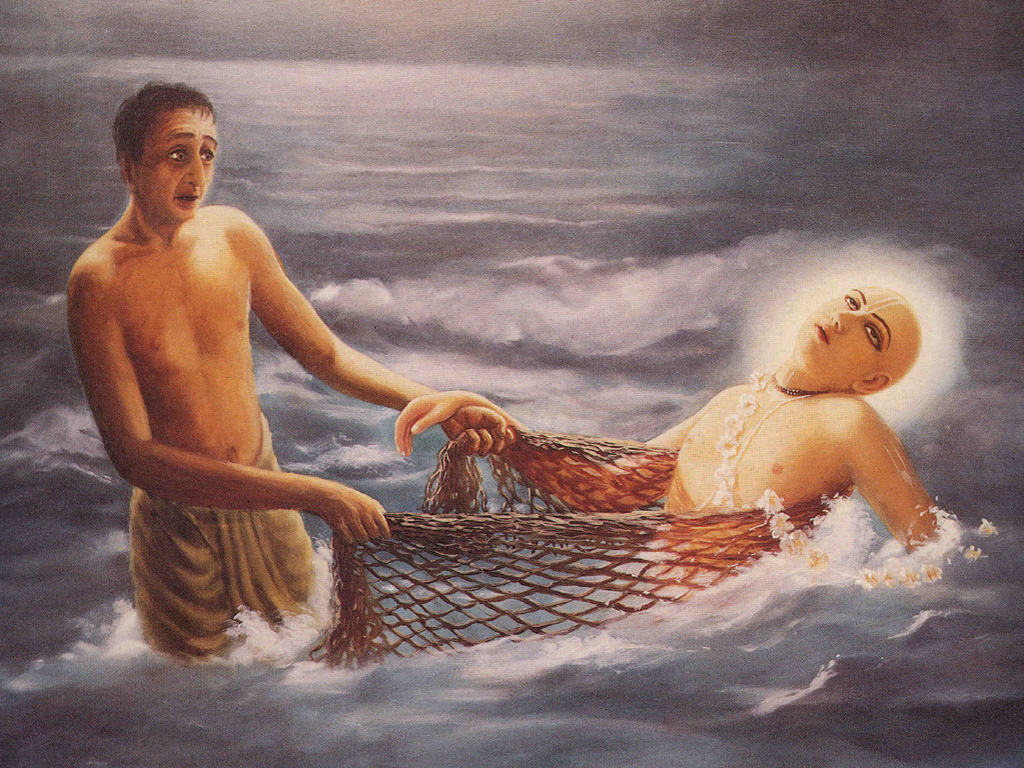 could not be performed by a human being. For example, when Mahāprabhu jumped into the ocean and was caught in the fisherman’s net, His body became elongated and all His joints were separated by eight inches. This is an opulence, and this is very deep and very hard to understand. After Mahāprabhu completed his talks with Rāmānanda Rāya, He tasted their fruits in Gambhīrā. Only three-and-one-half persons were allowed to enter there – Śrī Rāmānanda Rāya, Śrī Svarūpa Dāmodara, Śikhi Māhiti, and his sister Śrīmatī Mādhavī-devī.
could not be performed by a human being. For example, when Mahāprabhu jumped into the ocean and was caught in the fisherman’s net, His body became elongated and all His joints were separated by eight inches. This is an opulence, and this is very deep and very hard to understand. After Mahāprabhu completed his talks with Rāmānanda Rāya, He tasted their fruits in Gambhīrā. Only three-and-one-half persons were allowed to enter there – Śrī Rāmānanda Rāya, Śrī Svarūpa Dāmodara, Śikhi Māhiti, and his sister Śrīmatī Mādhavī-devī.
Dvārakā is full of opulence. There are so many palaces, elephants, horses, and chariots. Similarly, in Purī there was so much veneration by all Mahāprabhu’s devotees, and all were fearful to make proposals to Him. In Navadvīpa, on the other hand, Kholāvecā Śrīdhara would have arguments with Nimāi Paṇḍita – and Nimāi would even steal his vegetables.
In Vraja, Śrī Kṛṣṇa is considered an ordinary cowherd boy. In Navadvīpa, Śrī Caitanya Mahāprabhu is 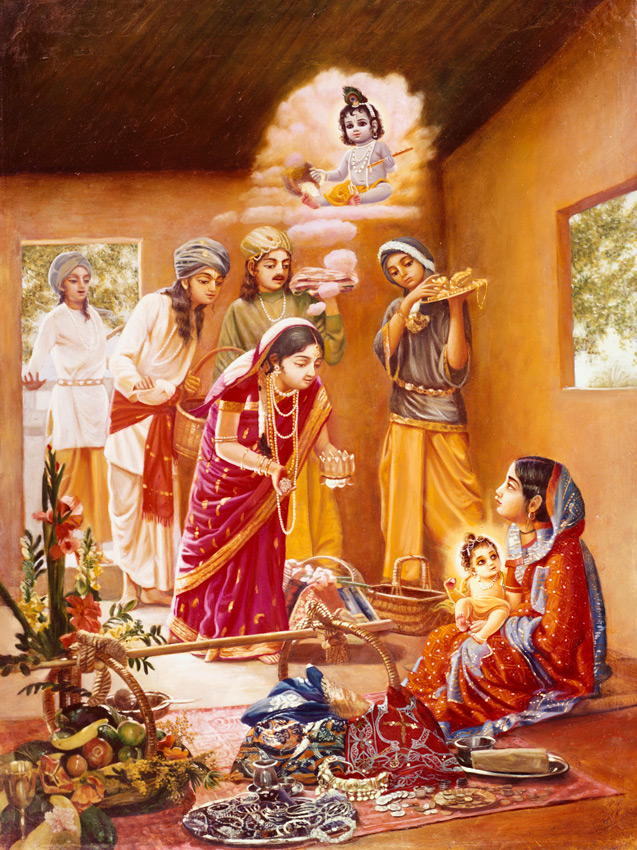 considered an ordinary brāhmaṇa’s son. No one could conceive of Him being called ‘Mahāprabhu’ in Navadvīpa. Only when He went to Purī did He begin to be called ‘Mahāprabhu’. In Navadvīpa He sucked the breast of Śacīdevī. He played with the girls who were worshipping Śiva-liṅga to get a good husband. He also sometimes behaved as a mischievous student. His līlā, therefore, is called mādhurya-mayī-līlā. Someone may object to this statement, considering that He manifested as Lord Nṛsiṁhadeva and Lord Varāha in Navadvīpa. This is true, but hardly anyone saw this. Practically all the devotees always thought He was simply Śacī-putra. Only those few who were in the mood of worship, like Murāri Gupta (who is Hanumān) or Śrīvāsa Paṇḍita (who is Śrī Nārada Muni), understood Him as the Supreme Lord.
considered an ordinary brāhmaṇa’s son. No one could conceive of Him being called ‘Mahāprabhu’ in Navadvīpa. Only when He went to Purī did He begin to be called ‘Mahāprabhu’. In Navadvīpa He sucked the breast of Śacīdevī. He played with the girls who were worshipping Śiva-liṅga to get a good husband. He also sometimes behaved as a mischievous student. His līlā, therefore, is called mādhurya-mayī-līlā. Someone may object to this statement, considering that He manifested as Lord Nṛsiṁhadeva and Lord Varāha in Navadvīpa. This is true, but hardly anyone saw this. Practically all the devotees always thought He was simply Śacī-putra. Only those few who were in the mood of worship, like Murāri Gupta (who is Hanumān) or Śrīvāsa Paṇḍita (who is Śrī Nārada Muni), understood Him as the Supreme Lord.
Comparing the three aspects
There is a comparison between the three aspects of Caitanya Mahāprabhu and the three aspects of Śrīmatī Rādhārāṇī. There is an original Rādhikā. The complete and original form of Śrīmatī Rādhikā is called Vṛṣabhānu-nandinī Rādhikā. She never leaves Vṛndāvana, and she only feels short-term separation from Kṛṣṇa – as when He goes cowherding for a few hours each day. Vṛṣabhānu-nandinī Rādhikā is always experiencing Her nitya-līlā or aṣṭa-kālīya-līlā pastimes with Kṛṣṇa, which take place twenty-four hours a day – from one early morning to the next. She is actually never separated from Kṛṣṇa. There is only an abhimāna, or self-conception, that they are sometimes separated.
Vṛṣabhānu-nandinī has two manifestations. One is viyogīni Rādhikā: Rādhikā feeling separation from Kṛṣṇa at Uddhava-kyārī when Kṛṣṇa was in Mathurā and Dvārakā. Her other manifestation is in Kurukṣetra, and that is saṁyoginī Rādhikā. It is saṁyoginī Rādhā who meets with Kṛṣṇa in Kurukṣetra. Just as Dvārakādhīśa Kṛṣṇa and Mathureśa Kṛṣṇa are always within pūrṇatama Vrajendranandana Śrī Kṛṣṇa, so these other two manifestations of Vṛṣabhānu-nandinī Rādhikā are included within Her original form.
Rādhikā’s full, original form also feels separation, but only at certain times. For example, She may wake up one morning and think, “Oh, what a terrible dream I had. Kṛṣṇa went to Dvārakā and He married so many queens.” Also now and then some conception comes, “Oh, Kṛṣṇa had left. No, Kṛṣṇa is here after all.” That sentiment or conception takes a sthūla-mūrti, tangible form, in prakaṭa-līlā.
The three aspects of Śrīmatī Rādhikā: Vṛṣabhānunandinī, viyoginī, and saṁyoginī are defined in the Sanat-kumāra-saṁhitā. Just as She has three aspects, Śrī Śacīnandana Gaura-hari has three aspects. Śrī-kṛṣṇa-caitanya, rādhā-kṛṣṇa nahe anya. Mahāprabhu is no one but Rādhā and Kṛṣṇa combined.
When Śrīmatī Rādhikā is speaking to the bumblebee at Uddhava-kyārī, She is viyoginī Rādhikā.
gopy uvāca
madhupa kitava-bandho mā spṛśaṅghriṁ sapatnyāḥ
kuca-vilulita-mālā-kuṅkuma-śmaśrubhir naḥ
vahatu madhu-patis tan-māninīnāṁ prasādaṁ
yadu-sadasi viḍambyaṁ yasya dūtas tvam īdṛk
(Śrīmad-Bhāgavatam 10.47.12)
[The gopī said: O honeybee, O friend of a cheater, don’t touch My feet with your whiskers, which are smeared 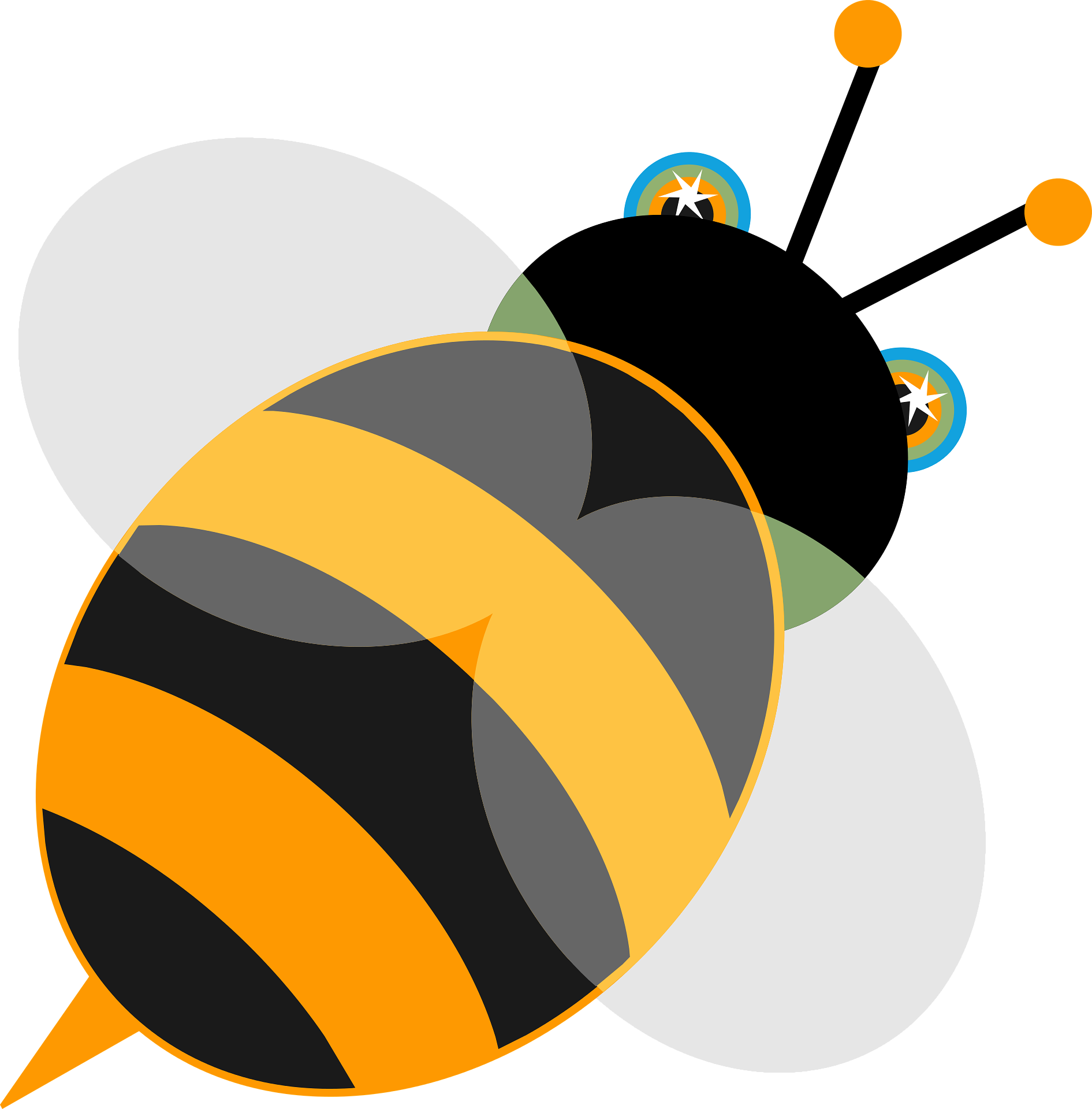 with the kuṅkuma that rubbed onto Kṛṣṇa’s garland when it was crushed by the breasts of a rival lover! Let Kṛṣṇa satisfy the women of Mathurā. One who sends a messenger like you will certainly be ridiculed in the Yadus’ assembly.]
with the kuṅkuma that rubbed onto Kṛṣṇa’s garland when it was crushed by the breasts of a rival lover! Let Kṛṣṇa satisfy the women of Mathurā. One who sends a messenger like you will certainly be ridiculed in the Yadus’ assembly.]
“O black bee, don’t touch me. I know you are a representative of Kṛṣṇa from Mathurā and you are trying to make some compromise. But I will never compromise with that Kṛṣṇa. I know that the red of your whiskers has come from the kuṅkuma which came from the breasts of His beloveds. It was smeared on Kṛṣṇa’s garland when He embraced them, and then came on your whiskers.”
This mood of transcendental madness is of viyoginī Rādhikā, and this is compared to Caitanya Mahāprabhu at Purī. Śrī Caitanya-caritāmṛta explains that the mood of Śrīmatī Rādhikā which was seen by Uddhava was the constant mood of Caitanya Mahāprabhu at Gambhīrā.
‘Vṛndāvanaṁ parityajya padam ekaṁ na gacchati.’ Kṛṣṇa never leaves Vṛndāvana. Nandanandana is always in Vṛndāvana. Vṛṣabhānu-nandinī also never leaves Vṛndāvana, and similarly, Śacīnandana never leaves Navadvīpa.
In Godāvarī, Caitanya Mahāprabhu manifested his rasarāja-mahābhāva-svarūpa. There in Godāvarī He discussed all tattvas: rasa-tattva, prema-tattva, and rādhā-tattva. But who saw this? Only Rāmānanda Rāya. This manifestation of rasarāja-mahābhāva was not an ordinary activity. No one else could have shown Himself as Rādhā and Kṛṣṇa. Therefore it is an opulence, aiśvarya, and it is not the highest līlā.
Śrīmatī Rādhikā’s partial moods and forms are included within her original form, and this is also true with Śrī Caitanya Mahāprabhu. In Mahāprabhu’s līlā, Purī is like Dvārakā. When He is in Gambhīrā He is experiencing Rādhārāṇī’s separation from Kṛṣṇa at Dvārakā, in the mood of viyoginī Rādhikā. When Mahāprabhu is in Godāvarī, He is like saṁyoginī Rādhikā. This aspect of Śrīmatī Rādhikā meets Kṛṣṇa at Kurukṣetra to bring Him back to Vṛndāvana. These two aspects of Mahāprabhu are included in Navadvīpa.
In Jagannātha Purī no one accepted the names Śacīnandana, etc. Everyone there had a reverential mood 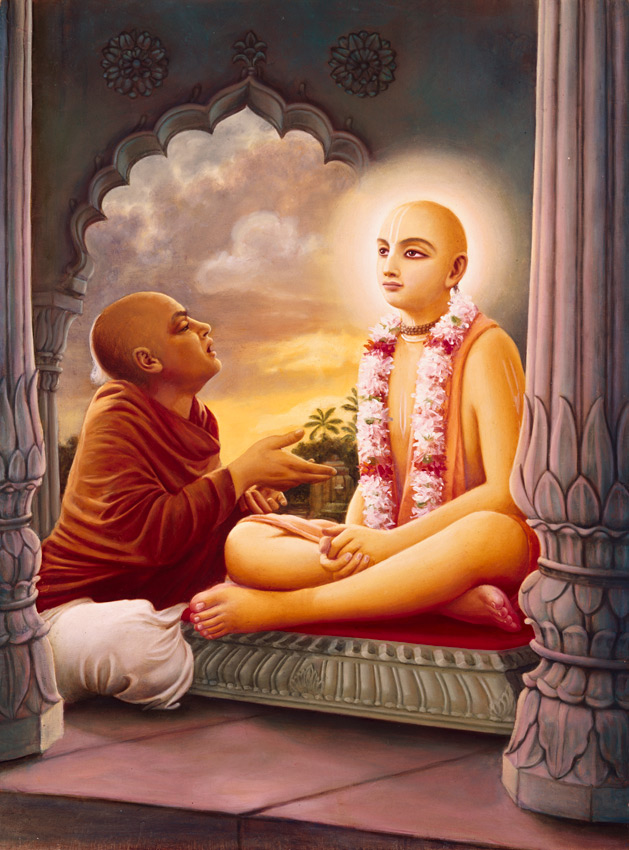 towards Mahāprabhu. Sārvabhauma Bhaṭṭācārya realized, “Here is the Supreme Personality of Godhead. I’ve never seen such a person.” Śrī Caitanya-caritāmṛta, Madhya-līlā 6, 9-13, states that while examining the body of Śrī Caitanya Mahāprabhu, Sārvabhauma saw that His abdomen was not moving and that He was not breathing. Seeing this condition, he became very anxious. He then put a fine cotton swab before Mahāprabhu’s nostrils. When he saw the cotton move very slightly, he became hopeful. Sitting beside Mahāprabhu, he thought: “This is a transcendental ecstatic transformation brought about by love of Kṛṣṇa.” Upon seeing the sign of sūddīpta-sāttvika bhāva, the Bhaṭṭācārya could immediately understand the transcendental ecstatic transformation in Mahāprabhu’s body. Such a sign could take place only in the bodies of Kṛṣṇa’s eternally liberated associates like the gopīs, and especially in Śrīmatī Rādhikā. The Bhaṭṭācārya considered, “The uncommon ecstatic symptoms of adhirūḍha-bhāva are appearing in the body of Mahāprabhu. This is very wonderful! How are they possible in the body of a human being?”
towards Mahāprabhu. Sārvabhauma Bhaṭṭācārya realized, “Here is the Supreme Personality of Godhead. I’ve never seen such a person.” Śrī Caitanya-caritāmṛta, Madhya-līlā 6, 9-13, states that while examining the body of Śrī Caitanya Mahāprabhu, Sārvabhauma saw that His abdomen was not moving and that He was not breathing. Seeing this condition, he became very anxious. He then put a fine cotton swab before Mahāprabhu’s nostrils. When he saw the cotton move very slightly, he became hopeful. Sitting beside Mahāprabhu, he thought: “This is a transcendental ecstatic transformation brought about by love of Kṛṣṇa.” Upon seeing the sign of sūddīpta-sāttvika bhāva, the Bhaṭṭācārya could immediately understand the transcendental ecstatic transformation in Mahāprabhu’s body. Such a sign could take place only in the bodies of Kṛṣṇa’s eternally liberated associates like the gopīs, and especially in Śrīmatī Rādhikā. The Bhaṭṭācārya considered, “The uncommon ecstatic symptoms of adhirūḍha-bhāva are appearing in the body of Mahāprabhu. This is very wonderful! How are they possible in the body of a human being?”
Hidden Vṛndāvana
Navadvīpa is gupta (hidden) Vṛndāvana. Although the twelve forests of Vṛndāvana are hidden in Navadvīpa, they are in a different sequence. Śrīla Bhaktivinoda Thakur has described this as acintya, inconceivable. He has explained that it is the speciality of this dhāma. It is hidden and crooked, so it cannot be exactly in the same sequence. This is the nature of hidden prema.
Rādhā-kuṇḍa is not far from Devānanda Gauḍīya Maṭha. Because Govardhana is here, Rādhā-kuṇḍa and 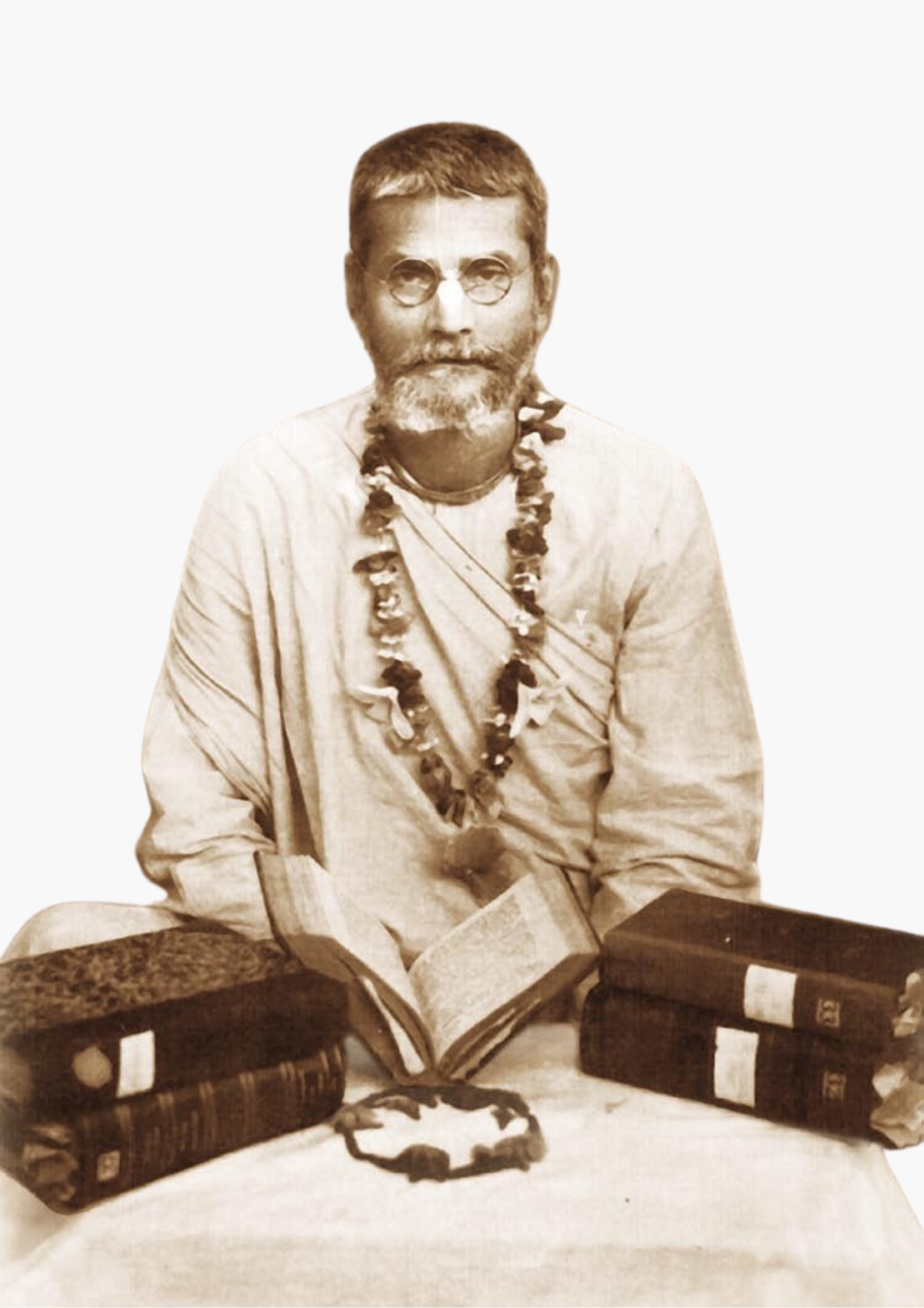 Śyāma-kuṇḍa must also be here. My Guru Mahārāja, nitya-līlā-praviṣṭa oṁ viṣṇupāda paramahaṁsa Śrī Śrīmad Bhakti Prajñāna Keśava Gosvāmī Mahārāja has fulfilled the innermost heart’s desire of Śrīla Bhaktisiddhānta Sarasvatī Mahārāja and Śrīla Bhaktivinoda Ṭhākura by establishing this temple in the valley or plain of Govardhana.
Śyāma-kuṇḍa must also be here. My Guru Mahārāja, nitya-līlā-praviṣṭa oṁ viṣṇupāda paramahaṁsa Śrī Śrīmad Bhakti Prajñāna Keśava Gosvāmī Mahārāja has fulfilled the innermost heart’s desire of Śrīla Bhaktisiddhānta Sarasvatī Mahārāja and Śrīla Bhaktivinoda Ṭhākura by establishing this temple in the valley or plain of Govardhana.
Caitanya Mahāprabhu sometimes stayed here and performed pastimes. One pastime, as explained in Śrī Caitanya-caritāmṛta, was when some young girls were making offerings to Śiva-liṅga with fruits, flowers, and other worshipable paraphernalia. At that time Nimāi Paṇḍita forcibly stole the offerings and told the girls that they should not waste their time worshipping Lord Śiva. He said, “I am the Supreme Personality of Godhead. You should worship Me. All the demigods and demigoddesses are my servants. If you do not worship Me I will curse you to all get ugly, old husbands who already have five wives.” They were all joking in this way, but they did not believe that He was the Supreme.
All the Vṛndāvana pastimes are there in Navadvīpa. Govardhana and rāsa–sthalī are present where we are now sitting, in Koladvīpa – at the Devānanda Gauḍīya Maṭha. Kṛṣṇa is dancing here with the gopīs. One may say that the highest place in Navadvīpa is Yogapīṭha at Māyāpura because that is where Śrī Caitanya Mahāprabhu appeared. But actually, Koladvīpa is superior. We must consider the siddhānta (the conclusive truth). Comparing Navadvīpa to Vṛndāvana, Mathurā-Gokula is the place where Kṛṣṇa appeared. He appeared simultaneously, as Lord Vāsudeva in Mathurā, and as a baby in Gokula. But this place in Koladvīpa is Govardhana, where Kṛṣṇa appeared in His original and most complete form, His kiśora form, His Rādhā-Kṛṣṇa yugala form. This is also where rāsa-līlā, the highest pastime, took place. It can be concluded, therefore, that this place is so much higher.
Śrīla Rūpa Gosvāmī confirms in his Upadeśāmṛta (Nectar of Instruction, Text 9) that, “The holy place known as Mathurā is spiritually superior to Vaikuṇṭha, the transcendental world, because the Lord appeared there. Superior to Mathurā-purī is the transcendental forest of Vṛndāvana because of Kṛṣṇa’s rāsa-līlā pastimes. And superior to the forest of Vṛndāvana is Govardhana Hill, for it was raised by the divine hand of Śrī Kṛṣṇa and was the site of His various loving pastimes. And, above all, the superexcellent Śrī Rādhā-kuṇḍa stands supreme, for it is overflooded with the ambrosial nectarean prema of the Lord of Gokula, Śrī Kṛṣṇa. Where, then, is that intelligent person who is unwilling to serve this divine Rādhā-kuṇḍa, which is situated at the foot of Govardhana Hill?”
Source: Purebhakti.com
Image(s) made possible by Pixabay.com, Krishnapath.org and/or Bhaktiart.net
Unless indicated differently, all verse translations and quotes are from the books by Śrīla Prabhupāda (Vedabase.com)